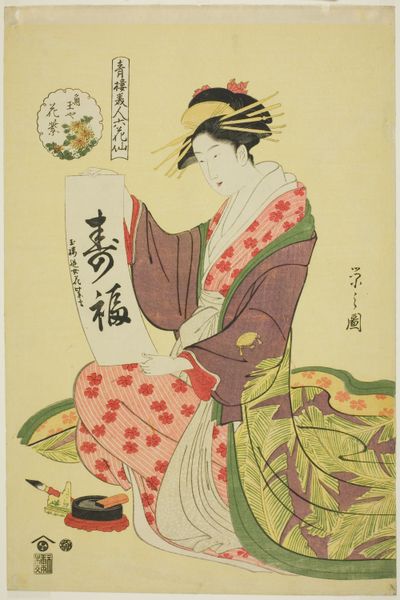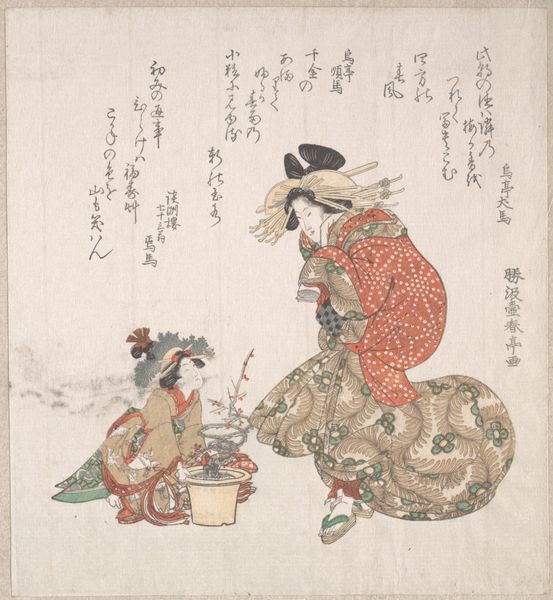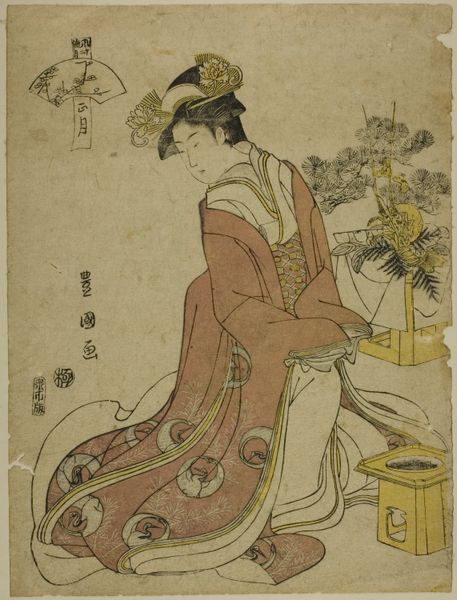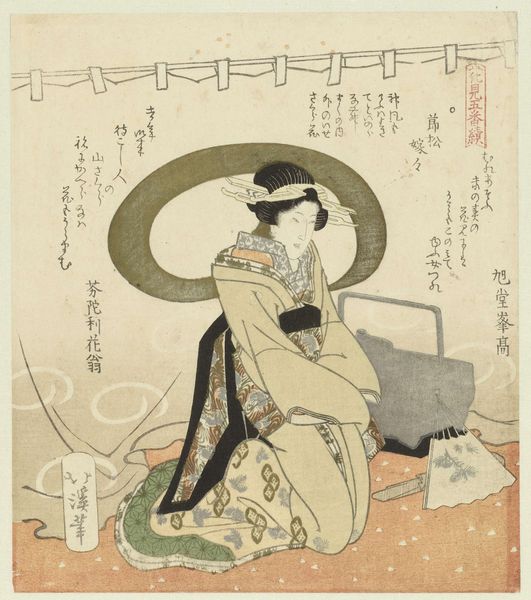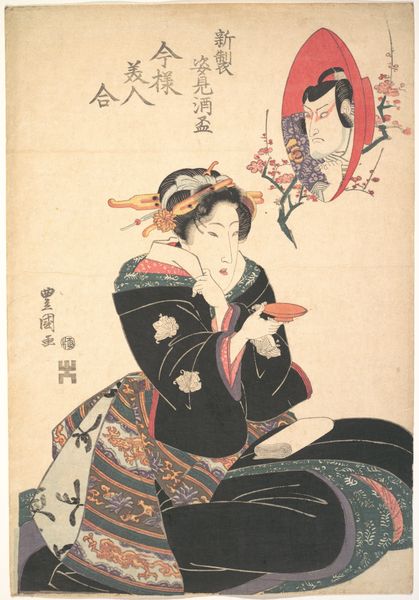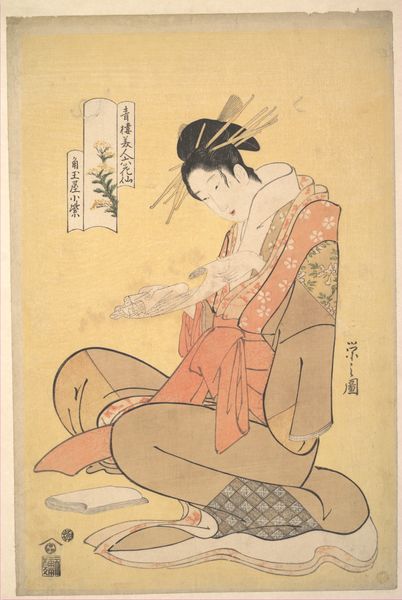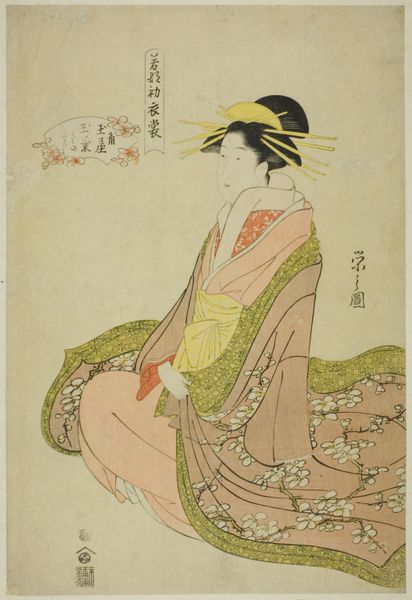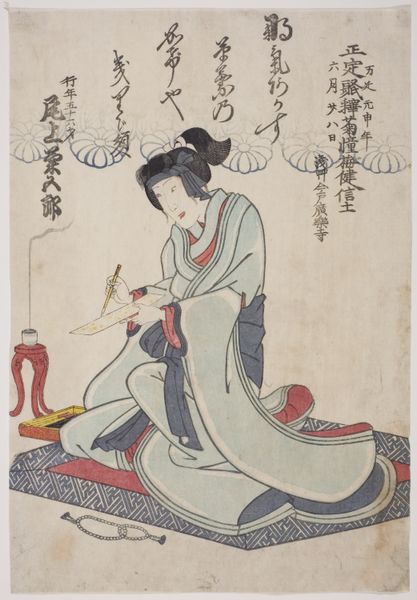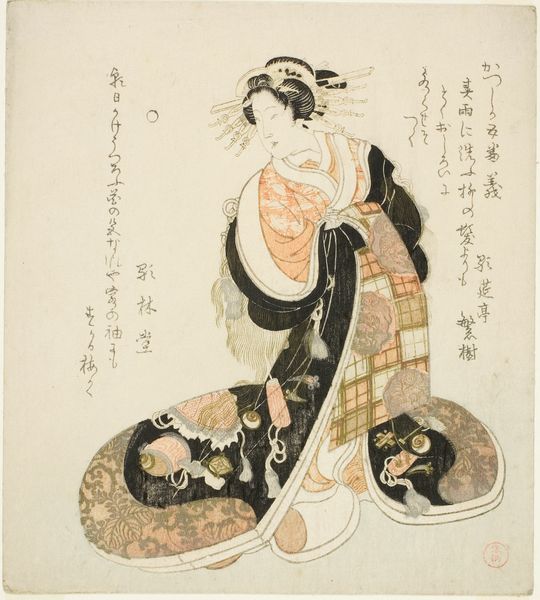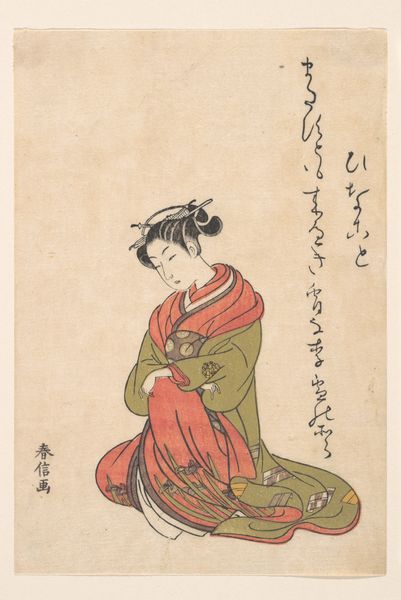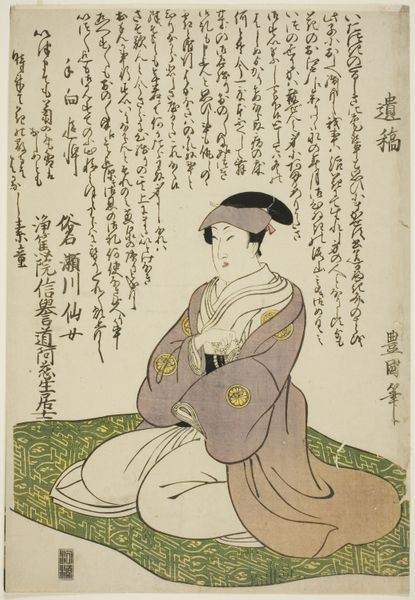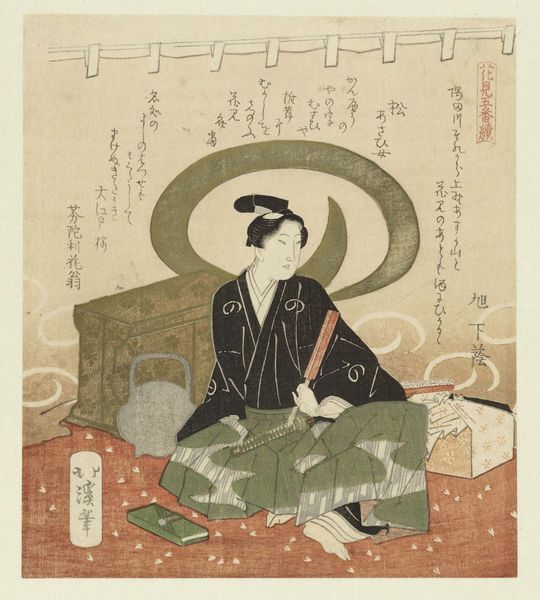
#
boat
#
imaginative character sketch
#
toned paper
#
light pencil work
# print
#
asian-art
#
japan
#
personal sketchbook
#
ink drawing experimentation
#
ink colored
#
men
#
sketchbook drawing
#
watercolour illustration
#
sketchbook art
#
watercolor
Dimensions: 13 x 9 in. (33 x 22.9 cm)
Copyright: Public Domain
Curator: What a serene image. Eishōsai Chōki's "The Courtesan Kisegawa of Matsubaya," a print dating back to 1796, resides here at the Metropolitan Museum. There’s such tranquility emanating from it. Editor: Absolutely, the pale washes of color certainly lend that air of tranquility. There's a pensiveness too, isn’t there? Look at her bowed head, she seems engrossed in her writing. It makes me wonder about the expectations placed on women in that era, particularly those in her profession. Curator: Indeed. The setting is intriguing; that decorative box that doubles as a seat, for instance, alludes to her social positioning as do her elaborate garments. This was produced during the Edo period, and these kinds of images – called *ukiyo-e* prints – gained immense popularity, depicting life in the pleasure districts of Edo, or what is now Tokyo. They represent a commercial market and idealized beauty, though sometimes revealing other aspects of urban existence. Editor: So it's a controlled narrative, shaped by economics and societal norms. And yet, you see the boat floating over what seems like stylized water in the background; is that an escapist desire woven into the print? Was she dreaming of more freedom than afforded to her within the Matsubaya establishment? Curator: That boat design, along with the fan image right next to it, seem to have served as a trademark design of Kisegawa as well as of the publishing house. What’s interesting, though, is the deliberate artistic license here. The boats don’t look like anything that really existed in the period. So they almost operate as symbolic elements on the image rather than representing some level of physical truth. Editor: And these idealized representations have a historical role too; to create fantasies and desires that fed into cultural beliefs and social values. Even seemingly passive, this courtesan image asserts some power by capturing attention, becoming an object of admiration and perhaps, subtly, desire. Curator: Exactly. These prints tell us so much about the structures of Edo society: the fashion, the entertainment, even the limitations placed upon its people. It is indeed a potent lens into history. Editor: Looking at this print then helps us to understand that art from the past doesn't merely exist within museums. They also reflect back at the complexities and inequities embedded in history which are often more subtle.
Comments
No comments
Be the first to comment and join the conversation on the ultimate creative platform.
